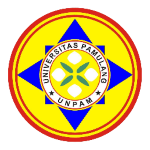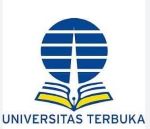The Factors of Risk Management Effect at Slope Construction Site
DOI:
https://doi.org/10.54099/hbr.v2i2.323Abstract
Purpose – Products originated from cocoa are globally popular. Therefore there is an economic significance in developing the cocoa-based industry. Indonesia, as one of the countries having good quality cocoa specimens, should benefit from this commodity. However, the cocoa-based industry has not contributed much to Indonesia’s GDP. Thus, this paper seeks to understand Indonesia’s cocoa industry’s position within the cocoa industry’s global value chain and any difficulties that prevent the cocoa-based industry from flourishing in Indonesia. Approach - This paper drew from the literature on the cocoa industry in Indonesia and the cocoa global value chain. Findings - This research shows that Indonesia’s underdeveloped cocoa industry lacks an understanding of Indonesia’s cocoa value in the global value chains. This lack of understanding is prevalent in the Indonesian economic bureaucracy and local cocoa industrial actors’ perspective. Novelty – In the study of political economy, the optimization of economic benefits can be achieved through good synergy in political policies to support the achievement of maximum value added for a leading commodity in a country. When the synergy among the stakeholders is optimal, the implemented regulations can be adequately implemented.
References
Abd Karim, N. A., Rahman, I. A., Memmon, A. H., Jamil, N., & Azis, A. A. A. (2012, December). Significant risk factors in construction projects: Contractor's perception. In 2012 IEEE Colloquium on Humanities, Science and Engineering (CHUSER) (pp. 347-350). IEEE.
Bannerman, P. L. (2008). Risk and risk management in software projects: A reassessment. Journal of Systems and Software, 81(12), 2118-2133.
Ghazali, P.L., Syed Jaaffar, S.A., Mohammed Foziah, N.H., A Tambi, A.M., Md Nawi, F.A., Mamat,M., Mohammad, S.B., Wan Daud, W.M.N., & Mahmud, M.S. (2019). The Construction of a New Mathematical Model for Islamic Home Financing. Asian Academy of Management Journal, 24(Supp.1), 33–41. https://doi.org/10.21315/aamj2019.24.s1.3
Ghazali, P.L., (2017). Risk Modelling, Assessment and Management. Penerbit UniSZA: Kuala Nerus.
Ghazali, P.L., Mamat, M., Omar, L., Hazimi, N., Mohammed Foziah, N.H., Guci, D., Abdullah, Y., Emmiey, N., Sazali, S., & Java, W. (2017). Medical Integration Model of FamilyTakaful For Blue Collar. Far East Journal of Mathematical Sciences, 101, 1197–1205. https://doi.org/10.17654/MS101061197
Ghazali, P.L, Mohd, I., Ahmad, W.M.A.W., & Mamat, M. (2012b). Integration Model Of Education Plan Takaful: A Case Study For Terengganu, Kelantan And Perlis, States In Malaysia. Far East Journal of Mathematical Sciences, 65(1), 97-117
Ghazali, P.L., Foziah, H., Mamat, M., Razak, R.A., Omar, L., Afthanorhan, A. , & Wan Daud, W.M.N. (2019b). Mathematical Concept in Integration Model of Education Plan Takaful. International Journal of Recent Technology and Engineering, 7(5), 594-599.
Ghazali, P.L., Mohd, I., Ahmad, W.M.A.W., & Mamat, M. (2012a). Implementation Of Integration Model For All. Journal of Applied Sciences Research, 8(3), 1802-1812.
Ghazali, P.L., Mohd, I., Ahmad, W.M.A.W., & Mamat, M. (2012c). Comparison Of Premium Life Tables Between Existing Model And Integration Model In Family Takaful. Journal of Applied Sciences Research, 8(7), 3754-3762.
Griffiths, D., Huang, J., & Fenton, G. A. (2011). Probabilistic infinite slope analysis. Computers and Geotechnics, 38(4), 577-584.
Guci, D. A., Ghazali, P. L., Foziah, N. H. M., Awang, Z. (2022). Conceptual Framework of Risk Control as Moderator on the Relationship between Determinant Factors Selection and Performance of SMEs in Indonesia: A Pilot Study. International Journal of Entrepreneurship and Business Management, 1(1), 15-20.
Nyangwara, P. O. & Datche, E. (2015). Factors affecting the performance of construction projects: a survey of construction projects in the coastal region of Kenya. International Journal of Scientific and Research Publications, 5(10), 1.
Orr, T. L., & Day, P. (2002). Survey of geotechnical investigation methods and determination of parameter values. Kamakura, Japan: Proc. of Foundation Design Codes and Soil Investigation in View of International Harmonization and Performance-Based Design.
Rabiee, F. (2004) Focus-Group Interview and Data Analysis. Proceedings of the Nutrition Society, 63, 655-660. http://dx.doi.org/10.1079/PNS2004399
Richard A. Krueger & Mary Anne Casey (2000). Focus Groups. A Practical Guide for Applied Research (3rd Edition). Thousand Oaks, CA: Sage Publications, 206 pages, ISBN 0-7619-2070-6
Senouci, A., Al-Abbadi, I., & Eldin, N. (2015). Safety improvement in building construction sites in Qatar. Procedia Engineering, 123, 504-509.
Thabit, T. H., & Younus, S. Q. (2018). Risk Assessment and Management in Construction Industries. International Journal of Research and Engineering, 5(2), 315-320.
Wood, G. D., & Ellis, R. C. (2003). Risk management practices of leading UK cost consultants. Engineering, Construction, and Architectural Management, 10(4), 254-263.
Zaini, A. A., Takim, R., & Endut, I. R. (2011, September). Contractors' strategic approaches to risk assessment techniques at project planning stage. In 2011 IEEE Symposium on Business, Engineering and Industrial Applications (ISBEIA) (pp. 320-325). IEEE.
Downloads
Published
How to Cite
Issue
Section
License
Copyright (c) 2022 Husnayain Business Review

This work is licensed under a Creative Commons Attribution-NonCommercial 4.0 International License.






